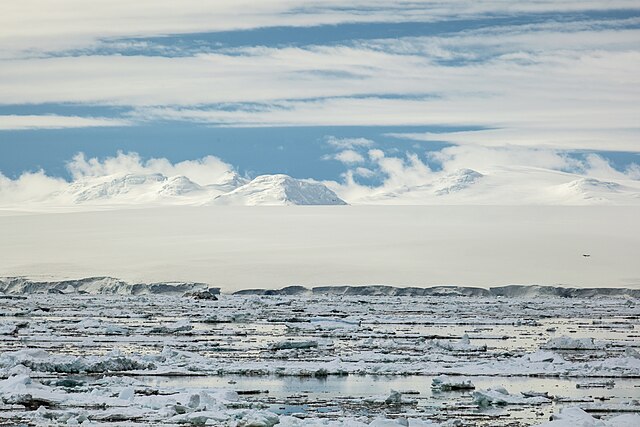The Ross Ice Shelf is the largest ice shelf of Antarctica. It is several hundred metres thick. The nearly vertical ice front to the open sea is more than 600 kilometres (370 mi) long, and between 15 and 50 metres high above the water surface. Ninety percent of the floating ice, however, is below the water surface.
Crevasse, Ross Ice Shelf in 2001
"The mystic Barrier" at Bay of Whales, near where Amundsen first encountered it. Note humans for size comparison (dark spots at left between large chunks of sea ice, near the left image border). RV Nathaniel B. Palmer is in the distance.
The edge of the Ross Ice Shelf in 1997
Main drill site for the New Zealand 2017 hot water drill camp on the Ross Ice Shelf
An ice shelf is a large platform of glacial ice floating on the ocean, fed by one or multiple tributary glaciers. Ice shelves form along coastlines where the ice thickness is insufficient to displace the more dense surrounding ocean water. The boundary between the ice shelf (floating) and grounded ice is referred to as the grounding line; the boundary between the ice shelf and the open ocean is the ice front or calving front.
View of the Larsen Ice Shelf grounding line between Mamelon Point and Hodges Point along the Foyn Coast of the Antarctic Peninsula. The floating ice shelf is in the left foreground, and the grounding line is visible as an abrupt change in surface slope due to flexure caused by the buoyancy force where the ice reaches flotation.
Some named Antarctic iceshelves.
Ice shelf extending approximately 6 miles into the Antarctic Sound from Joinville Island
Panorama of Ross Ice Shelf







